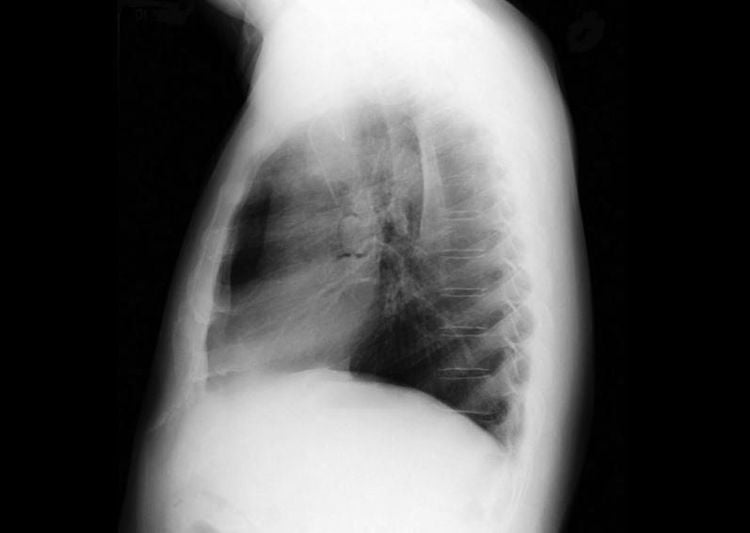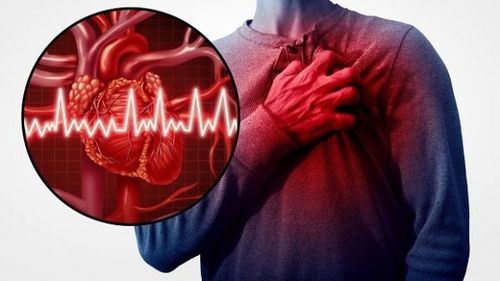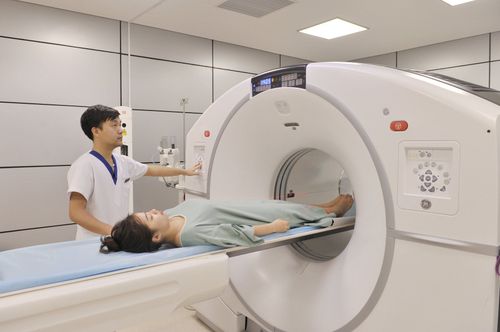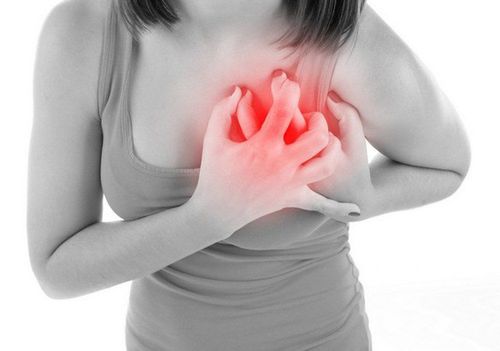This is an automatically translated article.
The article is professionally consulted by Master, Doctor Nguyen Van Phan - Head of Interventional Imaging Unit - Department of Diagnostic Imaging and Nuclear Medicine - Vinmec Times City International General Hospital.The peripulmonary pulmonary artery sign on radiograph indicates a well-defined circle surrounding the pulmonary artery and is seen in the anterior oblique position in the case of a pneumothorax.
1. Ring sign around the artery on X-ray
The peripulmonary pulmonary artery sign on radiographs is a well-defined circle surrounding the pulmonary artery and is seen in the anterior oblique position in cases of pneumothorax.Pneumothorax is the presence of air in the pleural space. The pleural space is the virtual space between the pleural wall and the visceral pleura. This cavity has negative pressure, normally there is a small amount of fluid so that the two leaves slide over each other easily when inhaling and exhaling, no air.
Clinical symptoms depend on the extent of the pneumothorax, and the degree of parenchymal atelectasis on the side of the pneumothorax. If the pneumothorax is large, it can cause complete collapse of the lung parenchyma, causing mediastinal changes and hemodynamic stability. Air can enter the pleural cavity from the chest wall causing tearing or perforation of the parietal leaf or from the lung parenchyma causing tear or perforation of the visceral pleura.

Hình ảnh hình nhẫn quanh động mạch trên x quang (một hình tròn sáng rõ bao quanh động mạch phổi)
2. Causes and factors leading to pneumothorax
There are many causes of pneumothorax such as:● Age; people who are tall, thin or have a history of smoking.
Air bubbles around the lobes of the lung burst.
● Chest trauma, lung trauma is also the cause of pneumothorax.
● Lung parenchymal diseases such as: chronic obstructive pulmonary disease (COPD); tuberculosis; asthma; primary or metastatic lung cancer; pulmonary fibrosis ; pneumothorax; diffuse interstitial fibrosis; pneumoconiosis...
3. Symptoms of pneumothorax
● Spontaneous pneumothorax: usually spontaneous or due to rupture of air bubbles. When pneumothorax is present, symptoms such as acute chest pain and dyspnea appear.Severe pneumothorax: chest pain, shortness of breath, low blood pressure, hypoxia

Người bệnh có thể xuất hiện triệu chứng khó thở và đau ngực
Pneumothorax due to treatment: Depending on the age of the patient, the existing lung parenchymal diseases and the degree of mild, moderate or severe pneumothorax, symptoms such as acute chest pain and difficulty breathing, low blood pressure, hypoxia.
Depending on each type of pneumothorax, the degree of coordination of the patient's treatment that leaves more or less sequelae, if the patient adheres well to the treatment and rehabilitation course, the patient can recover completely. do not leave sequelae, on the contrary, if compliance is not good, the sequelae can severely affect activities and later life. After the treatment of pneumothorax, the patient should re-examine according to the appointment of a respiratory specialist for timely advice.
Dr. Nguyen Van Phan is an interventional radiologist and radiologist, with extensive experience in diagnosing and performing vascular interventions such as brain aneurysm implantation, brain stenting, and vascular malformations. cerebrovascular brain; embolization for the treatment of hemoptysis; treatment of liver tumors, uterine fibroids, benign prostatic hypertrophy, stem cell transplantation for treatment of cirrhosis, congenital biliary atrophy, Type II diabetes... Non-vascular interventions such as high-frequency ablation frequency (RFA) treatment of liver tumors, benign thyroid tumors; aspiration and drainage of abscesses, drainage and stenting of biliary tract, urinary kidney; aspiration cytology and biopsies of breast, thyroid, lymph nodes, soft tissue, biopsies of liver tumors, lung tumors, bone tumors ...
To register for a visit at Vinmec International General Hospital, customers You can contact Vinmec Health System nationwide or register online HERE.














